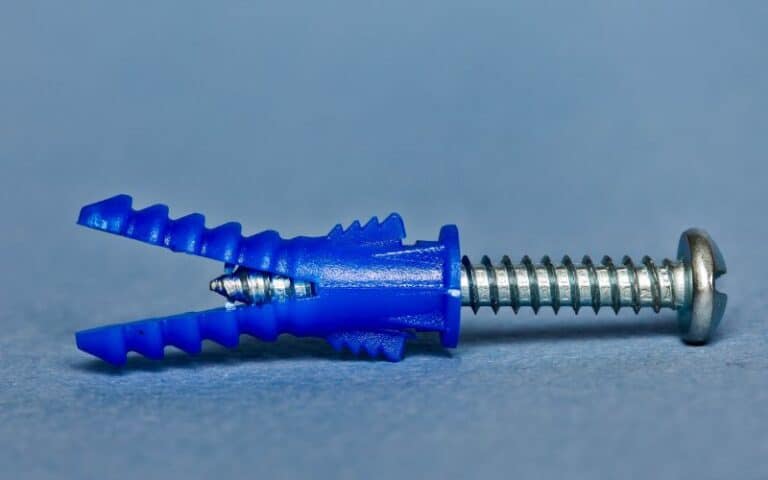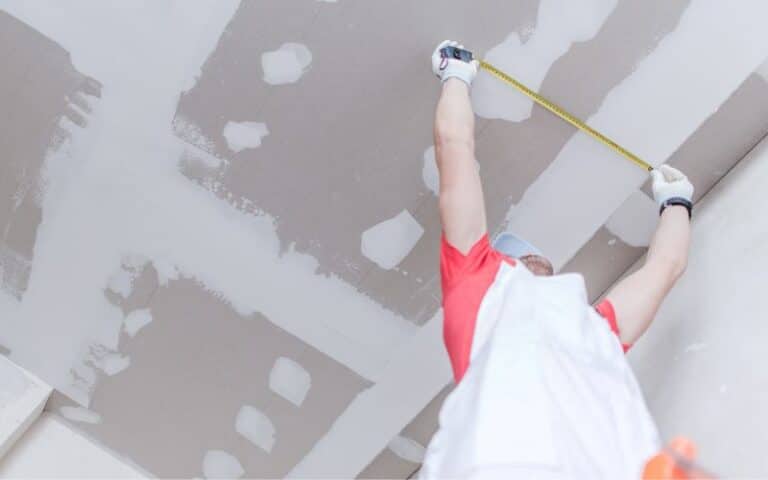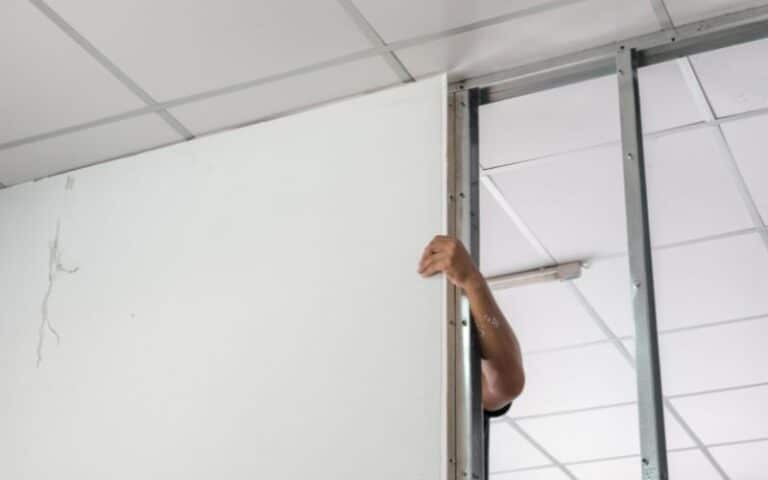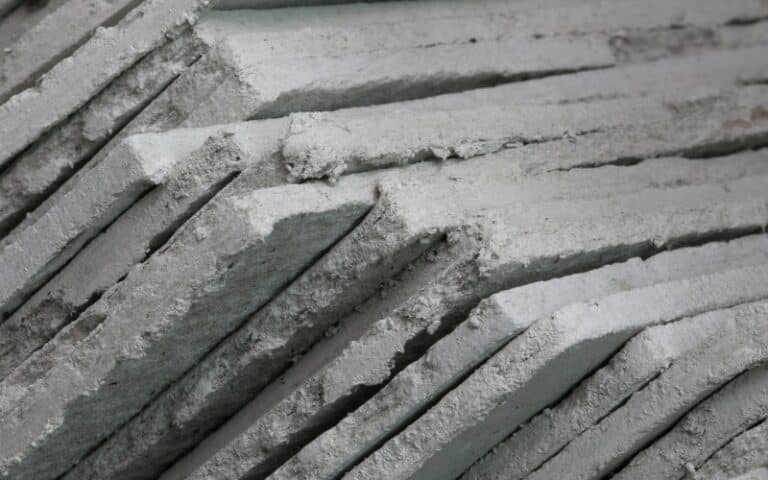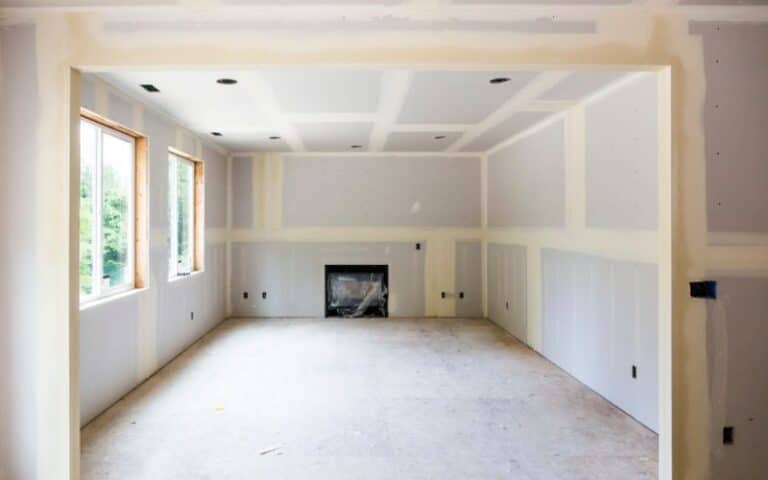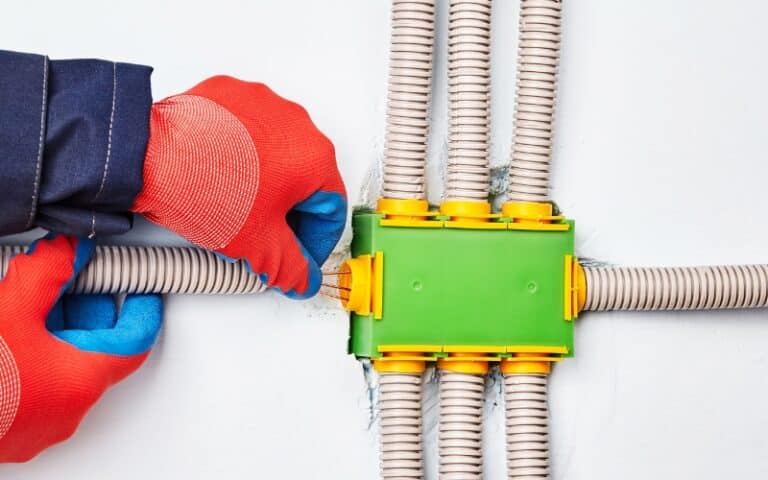Drywall is one excellent construction material used in most construction work, such as roofing, flooring, and, most commonly, wall cover.
However, as much as drywall is a good and durable wall surface, it isn’t designed to support wall mountings.
On that strength, you find anchor installations for support in most drywall mounts and support fittings.
Nevertheless, drywall anchors often have an issue; they can come loose and sometimes fall into the wall.
Drywall boards are relatively soft and very light-weighted construction materials and, as such, cannot firmly hold wall mountings. Over time, it is common to notice drywall anchors, which serve as support mounts getting loose and even falling into the wall. In such a case, replacing the drywall anchor or the hole is the best solution.
Is your drywall anchor loose and constantly falling into the wall? Worry no more!
Within this piece is the straightforward reason why drywall anchors usually come off loose and sometimes even fall into the wall.
Also, you’d learn simple and basic fixes to drywall anchors falling into the wall. Sit tight!
Ready for a Drywall Quiz?
Why Do Drywall Anchors Fall Into the Wall?

The nature of drywall boards is primarily why drywall anchors fall into the wall over time after installation.
As you’d already know, drywall boards are light-weighted and relatively soft wall construction material except in the design of high-impact gypsum drywall boards.
As such, they cannot firmly hold screws in themselves to provide anchor support. In other words, drywall anchors fall into the wall because regular drywall boards cannot hold onto mountings.
A quick illustration is as such, whenever you drive a screw directly into drywall boards, what do you notice? Your guess is correct; you usually only have a powered-like gypsum fall-out.
Generally, holes on drywall boards can’t support fittings on the wall. As such, you would only expect the drywall anchor support to get loose over time and certainly fall into the wall.
Aside from the nature of drywall boards, drywall anchors get loose and fall into the wall because of oversized holes.
Without any debate, you’d agree that oversized holes don’t give drywall anchors a chance to provide grip. There’s trouble if the hole is too big for the drywall anchor.
The anchor support will feel loose since it doesn’t grip the back of the drywall panel.
However, the anchor will freely spin inside the provided hole instead of tightly sticking in position.
Of truth, drywall anchors are a simple and cheap way to secure mountings to walls.
However, sometimes, the weight you want them to support may seemingly be too much. The drywall anchor will slip from the wall, crashing down your mount.
In summary, the three reasons why drywall anchors fall into the wall. The drywall boards’ nature, the hole’s size, and the mount’s weight.
What to Do If the Drywall Anchor Falls Into the Wall?
Whenever a drywall anchor falls into the wall, the first line of action is replacing the drywall anchor, preferably with a stronger one.
If the drywall anchor falls into the wall, it is probably because its grip hole has become oversized.
As you cannot conveniently retrieve drywall anchors inside walls without removing the board, your best shot is replacing the anchor.
An oversized hole is the only reason the drywall anchor falls back into the wall. And as such, you’d have to replace the drywall anchor with another bigger one.
Another obvious way to sort the problem is to drill a new hole and patch off the old one with a patching compound. This way, you’re sure of a robust and firm surface area grip.
The procedures below will guide you on replacing/relocating a drywall anchor.
- Lift the mount from the wall and remove the screw with a plier or screwdriver.
- If the drywall anchor is not in place, try inserting a new anchor while checking if it fits well.
- Wiggle and bend/rotate the anchor for certainty.
- If it does spin around the hole, you either have to use a more significant drywall anchor or change the position of the drywall anchor.
- For a new anchor position, first spread a patching compound to cover off the last hole.
- Select a new area of your choice. Then, using a power drill, make a hole in the wall. Ensure your drywall anchor is more significant than your drill bit size.
- With a nearly fitting hole size, press your drywall anchor into the hole. Then, you can tap it with a mallet to flush the collar with the drywall surface.
How to Fix Loose or Damaged Drywall Anchors?
Fixing a loose or damaged drywall anchor depends on the reason behind the actual drywall anchor problem.
Understanding why the drywall anchor is loose or damaged is halfway to fixing the problem. In most cases, the common reason for a loose drywall anchor is an incorrectly drilled hole.
The nature of the drywall board affects the degree of support drywall anchors will give. Quite agreeable!
However, even with a high-impact drywall panel, you’ll undoubtedly end with a loose anchor if your anchor hole is oversized.
Fixing a loose drywall anchor begins by getting the positioning hole right. It would be best to drill a perfect hole nearly the size of the drywall anchor.
A smaller hole to the size of the drywall anchor guarantees a perfect fix. Whenever the hole for the drywall anchor is oversized, there will be nothing for it to bite into.
However, if the hole is already oversized, possibly because of unstable drilling, there’s still a way out. Several products are found for stuffing oversized drywall anchor holes.
We have wood fillers, joint drywall compounds, spackle, and Wet-N-Fix.
Wet-N-Fix is the best on the list. Aside from using filler compounds on oversized drywall anchor holes, you can still opt for a more significant drywall anchor.
A more significant drywall anchor will have enough surface area to grip the back of the drywall panel.
Finally, you can completely patch off the loose hole and drill another, relocating the mount. This way, you’d get your loose drywall anchor problem fixed.
In the case of damaged drywall anchors, replacing them is the only possible fix. Also, you can use a wall plug to replace damaged drywall anchors.
The wall plug is a more viable option to drywall anchor, although a little more expensive.
Can Drywall Anchors Damage the Wall?
Indeed, installing a drywall anchor directly to the panel wall of drywall can crack the wall causing it to break in some instances.
As mentioned earlier, drywall panels are relatively soft and very light-weighted material. For example, drywall can barely hold up to 2.5 pounds per square foot.
Due to its weakness and the fact that it deteriorates over time, a drywall anchor can break and, in some cases, damage the wall.
For these reasons, drywall boards usually come with wooden or metal studs at intervals for holding mounts.
In every sense, installing mounts and fittings on the provided studs of drywall boards is the best.
However, drywall anchors are handy when you need help finding wall studs to hold your mountings. Nevertheless, it still comes with some downsides.
For instance, some drywall anchors leave a hole in the panel, often quite large and challenging to finish.
As a result, you’re constantly in the business of fixing and refixing the drywall holes. The failure of drywall boards to hold weight causes them to fail, crack, and damage.
Finally, working with drywall anchors makes it possible to damage the wall because of applied force.
Some drywall requires drilling through the board for installation, which sometimes doesn’t always go smoothly.
How Much Weight Can Drywall Anchors Support?
Drywall anchors come in different sizes, designs, shapes, and structures. As such, they can provide a wide range of varying weight support for mounts and fittings.
Steel hollow-wall drywall anchors can support about 100 pounds of weight mount. Whereas a toggle bolt drywall anchor can hold only half the weight amount.
As drywall anchors vary in the weight they can hold, so does the purpose of use.
Therefore, mounting fits on drywall boards to avoid anchors falling; another damage is knowing the weight each anchor can support.
Below are different types of drywall anchors and the respective loads they can hold.
| Drywall Anchors | Possible Weight Support (Pounds) |
|---|---|
| Steel-hollow anchors | 100 |
| Toggle/snap bolts anchors | 50-75 |
| Conical Anchors | 40 |
| Picture hangers | 20 |
However, to provide enormous support for weights, you can use a wall plug, a better option for drywall anchors.
Nevertheless, the standard way for most household support, including TV mounts, is using the provided drywall studs.

